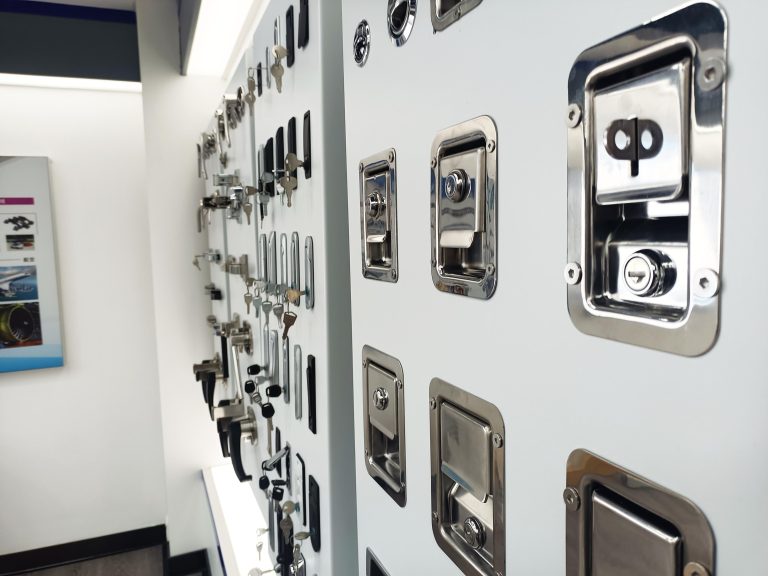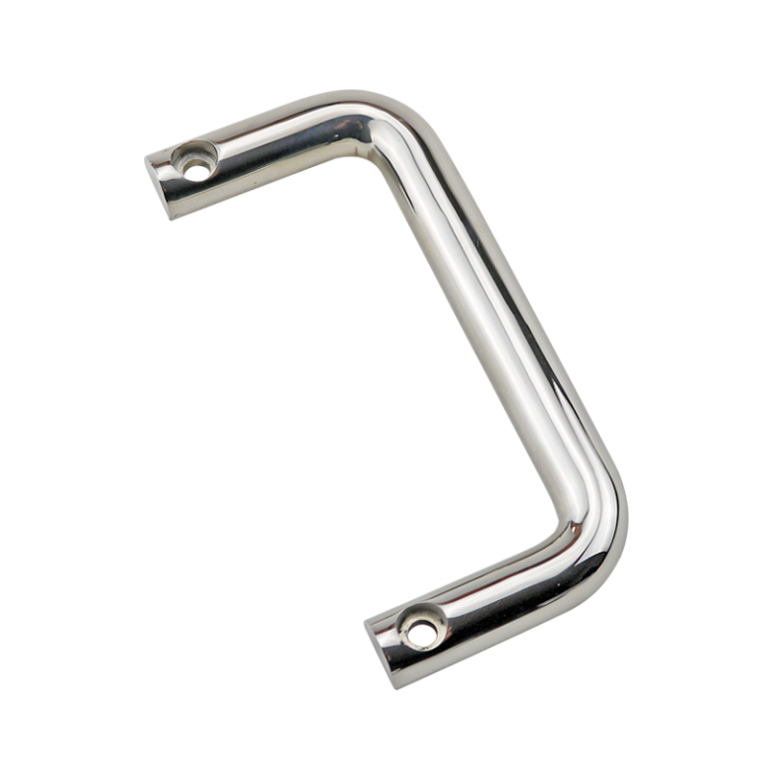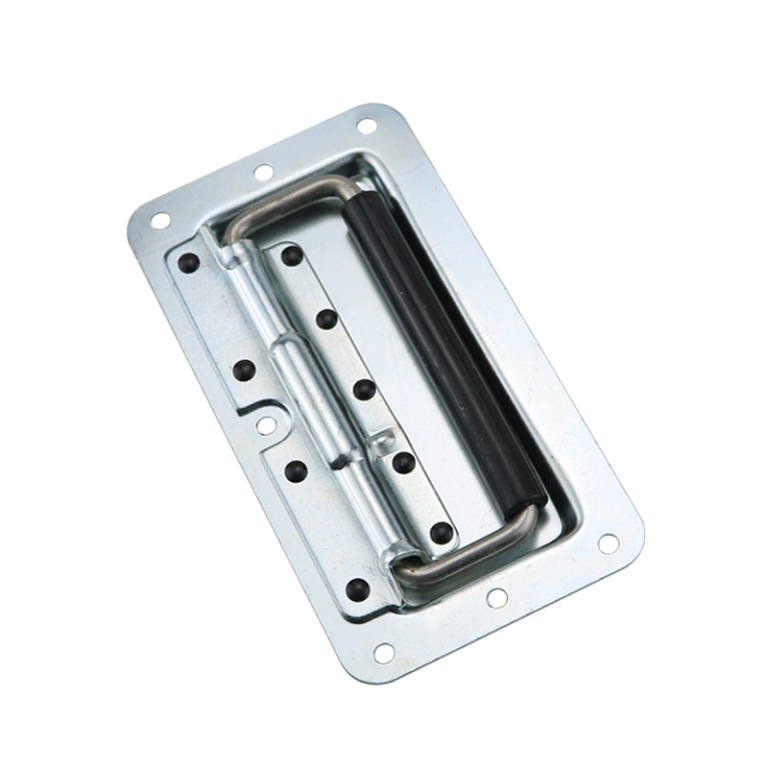HTAN is one of the leading manufacturers of industrial hinges, handles and latches in China.
In industrial equipment, office furniture, and high-end storage systems, recessed handles are rapidly replacing traditional external handles, becoming a key component to enhance functionality and aesthetics. This article analyzes the structural principles, application scenarios, and selection strategies of recessed handles to help you optimize cabinet door solutions for both practicality and visual appeal.
Table of Contents
ToggleWhat Are Recessed Handles?
A Recessed Handle is a precision-engineered component designed to be completely recessed into the cabinet door surface. Its outer edge maintains a plane tolerance of ≤ 0.5mm with the door panel, achieving a seamless integration both visually and tactilely.
Difference Between Recessed and Traditional External Handles
| Comparison Dimension | Recessed Handle | External Handle |
|---|---|---|
| Installation Method | Slotting in the door panel | Surface bolt fixing |
| Space Occupation | Zero convexity | 15-30mm protrusion |
| Cleaning Difficulty | Easy to wipe, no dead space | Prone to dust accumulation, requires disassembly for cleaning |
| Manufacturing Cost | High-precision machining (±0.1mm) | Conventional machining |
Core Components and Structure of Recessed Handles
1. Main Components
Handle Body:
- Material: Aluminum alloy, 304 stainless steel (corrosion-resistant), POM engineering plastic (insulating)
- Process: CNC precision machining (surface anodizing/sandblasting)
Built-in Support Structure:
- Heavy-duty cabinet doors: Steel-reinforced skeleton (load-bearing ≥ 50kg)
- Light cabinet doors: Nylon snap-type fixed seat
Installation Interface:
- Standard type: M4/M5 threaded holes, pitch 50mm/80mm
- Quick-fit: Spring clamp design, reducing installation time by 70%
2. Key Design Considerations
- Strength Verification: 10,000 cycles of opening and closing fatigue tests
- Environmental Adaptation: Salt spray test ≥ 720 hours
Advantages of Recessed Handles
- Seamless Integration: The recessed design ensures a modern, minimalistic look.
- Space-saving: Eliminates protrusions, reducing space occupation.
- Enhanced Safety: Prevents accidents caused by protruding handles, reducing risks of bumps and snags.
- High Durability: Made from high-strength materials like aluminum alloy, stainless steel, and engineering plastics, offering excellent wear and corrosion resistance.
Application Scenarios of Recessed Handles
- Industrial Control Cabinets & Electrical Cabinets: Commonly used for door panels.
- Warehousing Equipment: Installed in shelves, storage boxes, and logistics containers.
- Machinery Enclosures: Used on machinery casings or side panels for easy access.
Installation Guide for Recessed Handles
1. Pre-installation Preparation
- Tools & Materials: Screwdriver, trimming/cutting tool, tape measure, fixing screws or clips.
- Positioning Confirmation: Mark the installation location according to design drawings to ensure ergonomic operation height.
2. Precision Cutting
- Measurement & Marking: Use a tape measure to mark cabinet door dimensions, with an error margin of ≤1mm.
- Cutting Operation: Use a trimming machine to cut along the mark, then smooth the edges to avoid burrs.
3. Installation & Fixing
- Handle Insertion: Align holes and press the handle into the slot, checking the corner flatness.
- Fixing: Secure with screws.
Key Installation Notes:
- Waterproof Sealing: Apply neutral silicone to the joints for outdoor or humid environments.
- Safety Measures: Wear cut-resistant gloves and goggles; clean up debris promptly.
Material Selection Guide
| Requirement | Recommended Material |
| Corrosion Resistance | 316L stainless steel > anodized aluminum alloy > galvanized steel |
| Lightweight Demand | Carbon fiber > 6061 aluminum alloy > PEEK engineering plastics |
| Cost-sensitive Applications | ABS plastic > cold-rolled steel > composite materials |
FAQs
A: Opt for models with steel-reinforced structures, which support up to 80kg per point.
A: Apply thread adhesive to secure bolts and check pre-tensioning force every six months.
A: There are stainless steel, zinc alloy, aluminum alloy, engineering plastics and so on.
A: Stainless steel recessed handle has good corrosion resistance.
A:Different materials, load-bearing capacity is different, depending on what material, and business instructions
Conclusion
As an important innovation in cabinet door design, the recessed handles are made of high-precision CNC machining and high-quality metal and engineering plastics to ensure abrasion and corrosion resistance as well as to meet the demand of heavy-duty cabinet door loading.
Manufacturers should prioritize ISO 9001-certified suppliers and request 3D model fit test reports.
HTAN was founded in 2015, focusing on the research, development and production of industrial cabinet components, with a 7,000 square meters of independent factories, with dozens of patents, encountered embedded puller problems, please contact me.
Anson Li
Hi everyone, I’m Anson Li. I’ve been working in the industrial hinge industry for 10 years! Along the way, I’ve had the chance to work with more than 2,000 customers from 55 countries, designing and producing hinges for all kinds of equipment doors. We’ve grown together with our clients, learned a lot, and gained valuable experience. Today, I’d love to share some professional tips and knowledge about industrial hinges with you.
通讯更新
在下面输入您的电子邮件地址并订阅我们的新闻通讯
RELATED POSTS

Flat Latches Selection Guide
- 825 次浏览

How to Choose and Maintain Outdoor Corrosion Resistant Hinges
- 811 次浏览

Testing Equipment Handles A Comprehensive Guide
- 805 次浏览
-768x768.png)
Elastic Foldable Handles The Ultimate Upgrade for Versatility
- 836 次浏览

China Handle Manufacturers Your Gateway to Quality
- 831 次浏览
-1-768x768.png)
Hardware Handles A Comprehensive Guide for Wholesalers
- 812 次浏览

